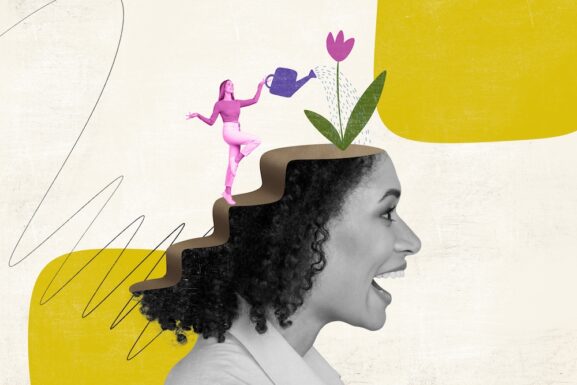New To Ketamine Treatment? Here’s A Glossary of Ketamine Therapy Terms
The FDA approved a ketamine nasal spray to treat depression in 2019, which changed the way a lot of people thought about this so-called “party drug.” And now, there are thousands of ketamine clinics across the United States. The unfamiliarity with ketamine therapy is changing as its therapeutic potential becomes more recognized. To help, we’ve compiled a glossary of ketamine therapy terms to give new patients a basic understanding of this treatment.
We will keep adding to this. But if you have questions about terms not on this list, leave them in the review section below and we’ll add them in.
RELATED?: Solving the Insurance Puzzle: How to Get Your Ketamine Therapy Covered
A Comprehensive Glossary of Ketamine Therapy Terms
- Analgesia: Pain relief, one of the effects of ketamine.
- Breakthrough Therapy Designation: This process aims to speed up the development and review of drugs that may show major improvements over existing therapies. Esketamine has received this status for treatment-resistant depression.
- Compassionate Use: Providing a new, unapproved drug to treat a seriously ill patient when no other treatments are available.
- Contraindications: Specific situations or conditions where the use of ketamine would not be advisable, such as certain psychiatric or medical conditions. The main contraindication is high blood pressure, since ketamine can elevate your blood pressure.
- Dissociation: A psychological experience of detachment from reality, which can be induced by ketamine, often described as a feeling of altered body perception and reduced ego boundaries.
- Depersonalization: A side effect of ketamine where one feels detached from their body or sense of self.
- Derealization: A side effect where the external world seems unreal or distant.
- Harm Reduction: Harm reduction refers to strategies and approaches aimed at minimizing the negative health, social, and legal impacts associated with drug use. Imnportantly, this is done without necessarily requiring cessation of drug use. In the context of ketamine therapy, harm reduction can take several forms: a close relationship with a prescriber to ensure the patient isn’t taking too much ketamine, taking it in unsafe settings, or using the drug as a means of escape.
- Integration Session: A therapy session often follows a ketamine experience to help the individual integrate the thoughts and emotions that emerged.
- Intramuscular (IM) Ketamine: Ketamine administered via a muscle injection, usually in the shoulder, providing a rapid onset of effects.
- K-Hole: A slang term describing the state of profound dissociation and immobilization that can occur with higher doses of ketamine. In a k-hole, your visual field looks dark. There are colors and visuals swirling or pulsating around you. You feel as if you are below the floor. Nearly everyone describes a sense of falling backward into this unfamiliar realm.
- Ketamine: A medication originally approved for anesthesia but now used off-label for treatment-resistant depression, chronic pain, and as part of psychotherapy. Also used in an FDA-approved and often insurance-covered way as a nasal spray called Spravato.
- Ketamine Infusion: The administration of ketamine intravenously–that is, into the veins using an IV–typically used in a clinical setting for controlled dosing.
- Lozenges/Troches: Patients consume ketamine orally with these slow-dissolving tablets.
- Neuroplasticity: The ability of neural networks in the brain to change through growth and reorganization, which ketamine is believed to enhance.
- NMDA Receptor Antagonist: Ketamine belongs to a class of anesthetics that block the N-methyl-D-aspartate receptor in the brain.
- Off-Label Use: The use of a pharmaceutical drug for an unapproved indication or in an unapproved age group, dosage, or route of administration. Ketamine injections are off-label. Spravato, on the other hand, is an approved treatment.
- Psychedelic-Assisted Psychotherapy: A broader term that includes the use of various psychedelics, including ketamine, psilocybin, or MDMA as adjuncts to psychotherapy.
- Psychedelic Therapy: A form of therapy that involves the use of psychedelic drugs like ketamine to enhance the therapeutic process.
- Psychotherapeutic Integration: The process of incorporating the insights and experiences from a ketamine session into one’s psychological framework.
- Psychotherapy: Psychological methods are used to help a person change behaviors and overcome problems, often as part of ketamine-assisted therapy.
- Racemic Ketamine: The most common form of ketamine used in clinical settings, containing an equal mixture of two mirror-image molecules: “R-” and “S-ketamine.”
- S-Ketamine (Esketamine): A more potent isomer of ketamine, often used in a nasal spray form under the brand name Spravato for treatment-resistant depression.
- Set and Setting: The mental attitude (set) and the physical and social environment (setting) in which one administers ketamine play crucial roles in influencing the experience and outcome.
- Spravato: Spravato is the brand name for esketamine. Spravato is a nasal spray the FDA has approved for treatment-resistant depression and depressive symptoms in adults with major depressive disorder (MDD). As well as acute suicidal ideation or behavior. Patients use Spravato alongside an oral antidepressant. Esketamine, the S-enantiomer of racemic ketamine, is a potent part of the ketamine molecule with antidepressant effects. Janssen Pharmaceuticals, a Johnson & Johnson subsidiary, developed and markets it.
- Sublingual Ketamine: This is when you administer ketamine under the tongue using a lozenge (sometimes called a troche) for absorption into the bloodstream.
- Telehealth: Telehealth, or telemedicine, refers to the practice of delivering healthcare services remotely using telecommunications technology. In ketamine therapy via telehealth, patients typically receive lozenges by mail and undergo the experience at home. And they are guided by a therapist on Zoom.
- Therapeutic Alliance: An essential aspect of effective therapy, including ketamine-assisted therapy. This is the collaborative relationship between a therapist and a client.
- Treatment-resistant Depression (TRD): Depression that does not respond to traditional treatment methods–such as talk therapy or SSRIs like Prozac–often qualifies for consideration of ketamine therapy.



